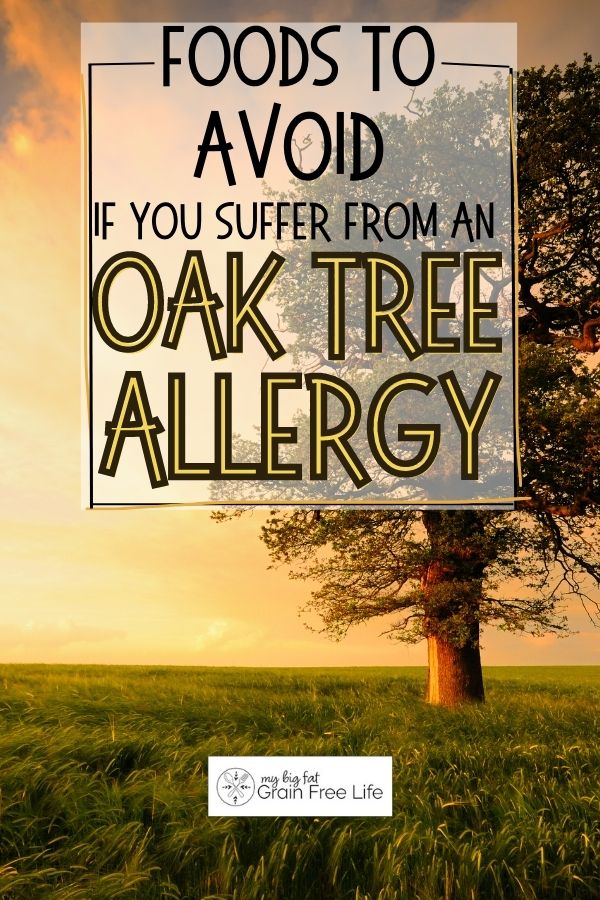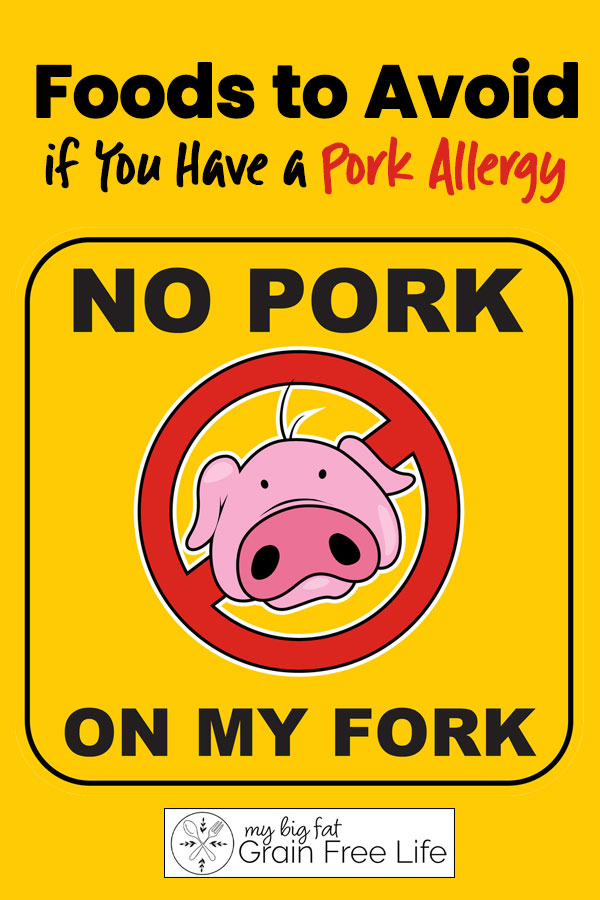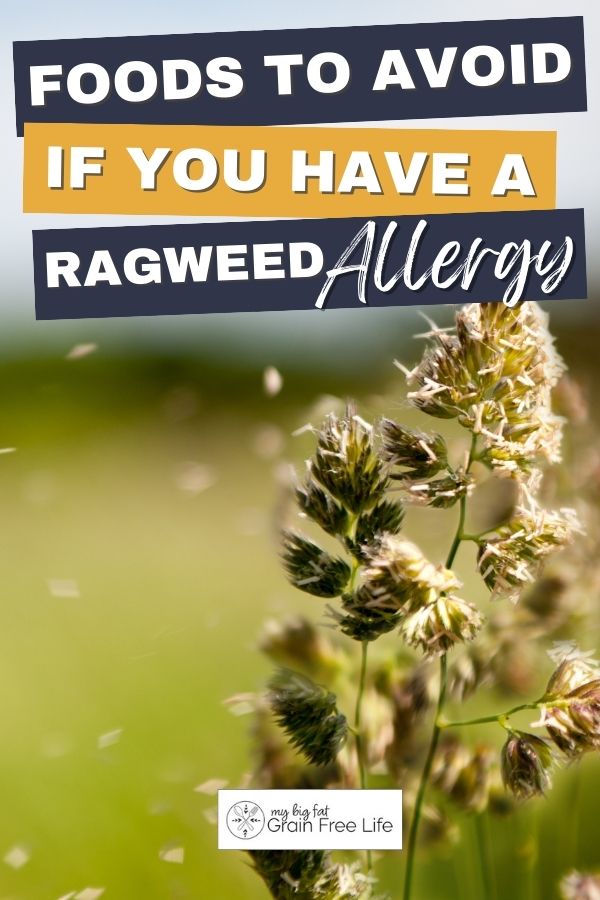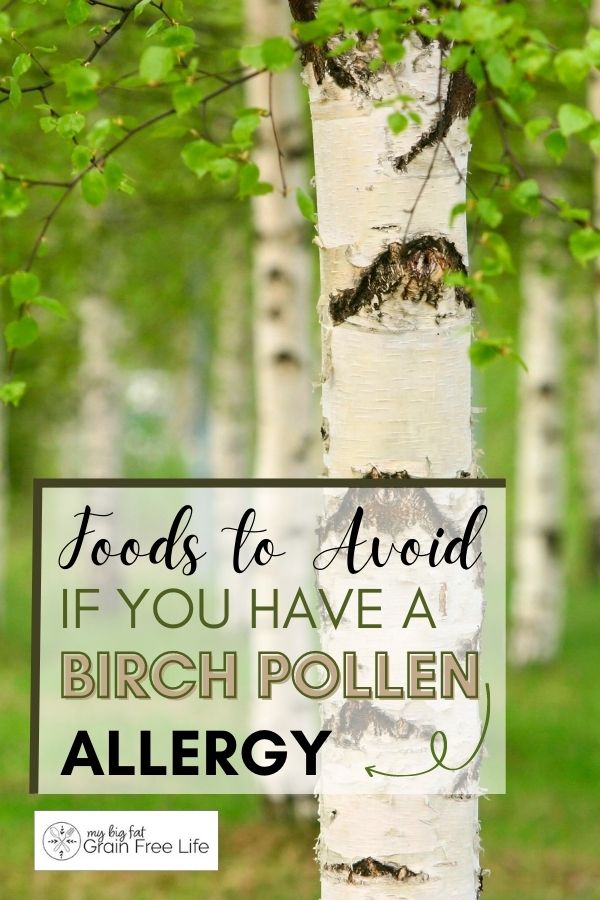Foods to Avoid if You Suffer From an Oak Tree Allergy
This post may contain affiliate links. If you make purchase after clicking a link, I may receive a commission at no extra cost to you.
Last Updated on August 7, 2023
You’re familiar with sneezing, itchy eyes, and a runny nose if you suffer from seasonal allergies due to oak pollen. And if that wasn’t enough, did you know that some foods and tree pollen have similar proteins and may cause your immune system to trigger an allergic response? You will want to avoid these oak tree allergy foods during hay fever season.
Oak Tree Allergy Foods
Not everyone knows that when you have allergies to certain tree pollen there are some foods that can trigger a histaime response. It’s good to know that you only need to avoid oak tree allergy foods during the time that the trees are producing pollen.
Let’s learn a bit more about foods and tree pollen allergies!
Foods and Tree Pollen Allergies
The reason for the allergic response is that oak tree pollen and a few specific foods have similar proteins. Eating these foods during the time of year when oak tree pollen is floating on the breeze may cause you to suffer what’s known as pollen-food allergy syndrome.
It’s a cross-reaction between the tree pollen allergy and common foods.
The good news is that the pollen food allergy syndrome usually ends after the different types of oak trees stop producing pollen.
Pollen-Food Allergy Syndrome
Pollen-Food allergy syndrome is also called oral allergy syndrome. Some types of raw fruits, vegetables, and tree nuts have similar proteins to the pollen proteins you’re allergic to. The result is that your immune system is triggered, and you experience what’s known as a cross-reaction.
The cross-reaction is usually oral symptoms you’ll experience in the areas around your mouth and throat that were exposed to the raw food.
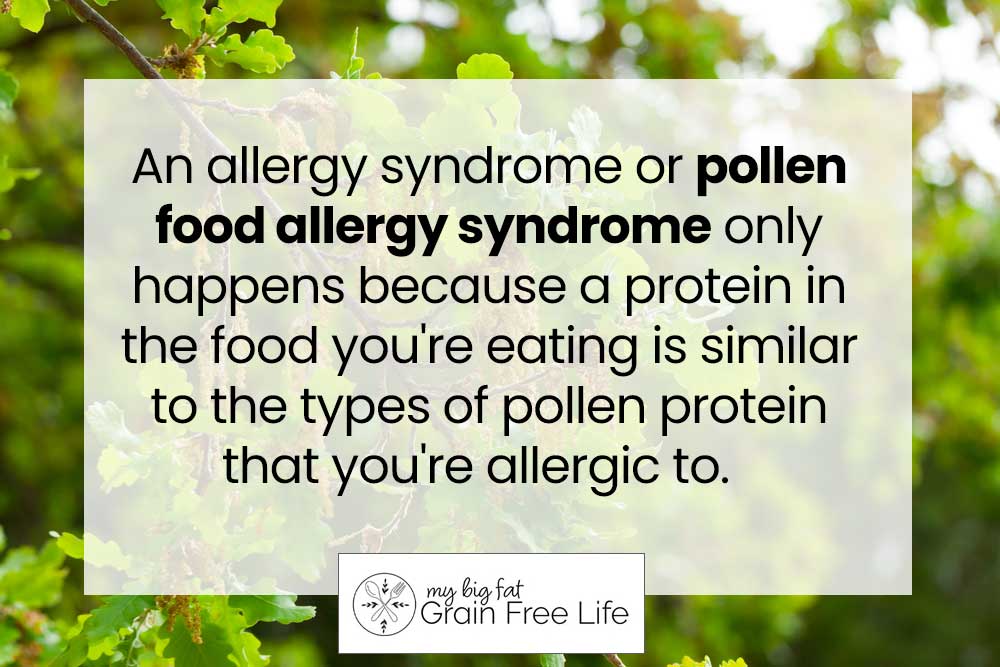
Allergy Syndrome Vs a True Food Allergy
An allergy syndrome is not the same thing as a true food allergy. Here’s the difference:
True Food Allergies
An actual food allergy triggers an immune response after you’ve eaten the food. This immune response can affect your entire body. You may experience hives, breathing issues, stomach problems, or other reactions as a result.
In addition, cooking will not remove the food allergens from the food.
Allergy Syndrome or Pollen Allergy
An allergy syndrome or pollen food allergy syndrome only happens because a protein in the food you’re eating is similar to the types of pollen protein that you’re allergic to. You’ll usually only experience a reaction around your mouth and throat rather than throughout your entire body.
Cooking the foods which trigger the allergy syndrome destroys the proteins that trigger an allergic response.
Symptoms of Oak Tree Allergy
Most symptoms of an oral allergy are felt in the mouth. You also may notice some of the following symptoms:
- abdominal pain
- congestion
- coughing
- diarrhea
- gastrointestinal symptoms
- itchy eyes and nose
- nausea
- runny nose
- scratchy throat
- sneezing
- symptoms similar to pollen exposure
- vomiting
- watery eyes
Some more severe reactions include throat swelling, hives or anaphylaxis
Causes of Oak Tree Allergy
There is a known allergen called Bet v 1-like protein in most oak species. The pollen from oak trees is very similar to that of birch trees and is a common pollen allergen than many people have reactions to.
There’s a separate list of foods to avoid for birch allergies if that affects you too.
What Foods Worsen Oak Tree Allergies?
Eating fresh fruit like peaches and cherries can worsen oak tree allergies. These foods have similar proteins to the oak tree pollen, and allergy sufferers may find these food increase their symptoms.
Other raw fruits to avoid include strawberries and apples. Also avoid foods such as eggs, chestnuts, hazelnuts, and soy.
It’s a good idea to cook these foods. The heat destroys the proteins that cause the oral allergy syndrome.
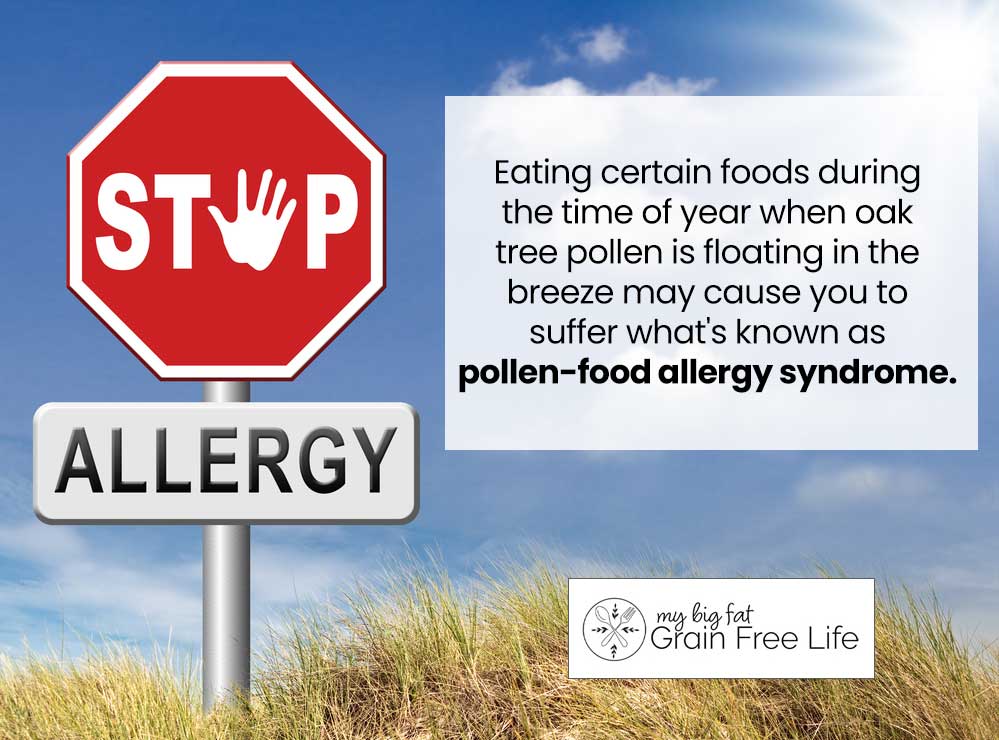
Oak Tree Allergy Foods
There are some foods that have been associated with an oral allergy syndrome to oak trees. You may or may not have issues with these foods:
- eggs
- chestnuts
- apples
- cherries
- peaches
- strawberries
- hazelnuts
- soy
Tips to Lessen Tree Allergy Symptoms
In addition to avoiding the foods that trigger allergic symptoms, there are several ways to lessen your seasonal allergic rhinitis or hay fever during the pollen season. These include various methods to reduce your contact with the allergenic proteins found in the airborne pollen.
Thoroughly Rinse Fresh Fruits and Vegetables
Make sure you thoroughly rinse all fresh fruits and vegetables. The produce has been exposed to airborne pollen. The oak pollen and other particles stick to the produce triggering an allergic reaction.
So rinse your fruits and vegetables by gently rubbing them under running water. A vegetable brush works beautifully to scrub produce with firm skin, like carrots, potatoes, and melons. When you have finished rinsing the produce, dry them using a clean cloth or a paper towel.
Even if you plan on peeling the produce, make sure you rinse and dry the produce first. This will prevent any dirt, bacteria, or pollen from contaminating the food you will be eating.
You will also need to remove the outermost leaves of any lettuce and cabbage you may be eating to prevent accidental exposure to pollen proteins.
Peel Fruits and Vegetables
The protein that will trigger symptoms of allergic rhinitis is most concentrated in the skin of fruits and vegetables. So peel all fruits and vegetables before you eat them.
Remember to thoroughly rinse the fruits and vegetables before you peel them to prevent any pollen from contaminating the food.
Cook Vegetables and Fruit
Unlike a true food allergy, heat will damage and destroy the proteins causing the allergies. This means that you can enjoy the food cooked, just not raw.
For example, while a fresh apple will trigger an allergenic response, you can cook up some applesauce to enjoy with dinner.
How can I prevent symptoms during oak season?
You have several ways to avoid oak allergy symptoms during the spring season.
For instance, the pollen grains are spread on the wind. The best way to avoid oak pollen allergies is to stay indoors, especially on windy days or when there’s a high pollen count.
Keep your house and car windows closed to prevent large amounts of pollen from entering. Also, use a HEPA air purifier or filters in your home to remove any pollen that may enter your house.
If you do head outside to enjoy outdoor activities, change your clothes and take a shower immediately when you return indoors. This will help to reduce your exposure to the specific allergens causing your symptoms.
You can also consider wearing a face mask outside, particularly if the pollen count is high.
Don’t hang your laundry outside in the sun to dry. The airborne oak pollen will attach itself to your clothing, sheets, and towels, exposing you to high amounts of tree pollen.
If you use allergy medications to mitigate your oak tree allergy symptoms, make sure that you take the allergy medications when you head to bed each night. The medications usually take about 30 minutes before they begin to work, might make you drowsy, and last for 24 hours.
Taking the medication at night will ensure that medicine will be in your system, preventing any allergy symptoms when you wake up in the morning.
When Is Oak Pollen Allergy Season?
The oak pollen allergy season happens in the spring when the various species of oak trees release their pollen.
A lot of people find that the oak allergy season occurs from February through May when the warmer temperatures begin, and the various tree species begin releasing pollen. However, the pollen season may begin as early as January in the southern states.
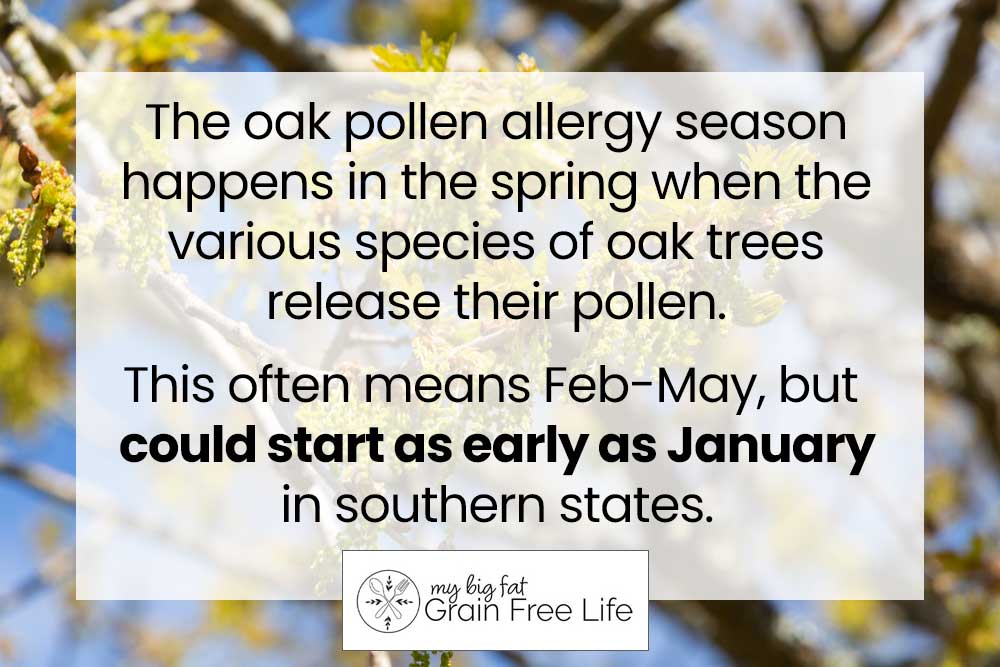
When Will Oak Pollen Be the Worst?
March and April typically have higher counts for oak allergy pollen. Days that are dry and windy will probably be the worst for those who suffer from oak tree allergies.
Ways to Limit Exposure to Oak Allergens
You can learn about tree pollen and allergies and know when to stay on guard. Here’s some great ways to keep your symptoms at bay.
- Watch the pollen count
- Stay indoors during the day
- Wash your face each night and shower after being outside
- Use a HEPA air filter in your home
- Don’t open windows during oak allergy season
- Avoid foods that could trigger an oak pollen reaction
Other Allergy-Related Foods to Avoid:
- Ragweed Allergy Foods to Avoid
- Birch Pollen Allergy Foods to Avoid
- MSG allergy Foods to Avoid
- Pork Allergy Foods
Final Summary
Some people have severe oak allergies and need to avoid foods that could trigger pollen allergy symptoms, such as itchy mouth, inflammed nasal passages, and other hay fever-like symptoms.
While you can opt for allergy shots, nasal sprays, or allergy drops, a more natural way of keeping your oak allergies under control are to know what oak allergy foods to avoid. We hope this information has been helpful for you.

